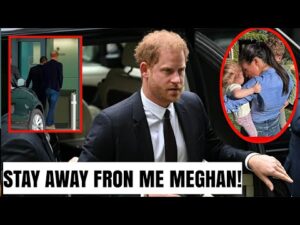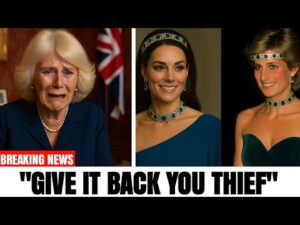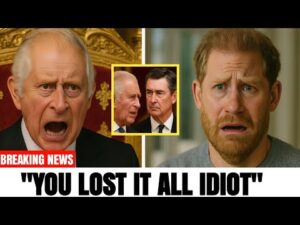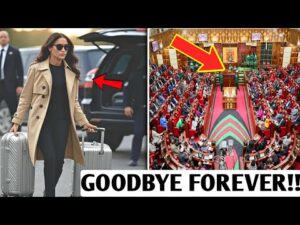Meghan LOSES It All After UK Parliament Released Shocking Bombshell About Sussex Royal Title.

The fallout did not happen overnight, though it might have seemed so to the outside world. To those watching from the streets of London, from Buckingham Palace balconies, and from millions of living rooms around the world, the Sussex saga seemed sudden, explosive, almost theatrical in its timing. But in reality, it had been building for years—quietly, invisibly—like cracks forming beneath the surface of a seemingly pristine marble floor. The public only saw the fissures once they had deepened.
When the first signs of strain became undeniable and the consequences were too big to ignore, before we continue, please hit the like button, subscribe to the channel, and turn on the notification bell for updates. It began with subtle shifts in behavior—small cracks in protocol that went largely unnoticed at first. Meghan Markle, the American actress turned duchess, brought with her a life lived differently, a perspective shaped outside the walls of centuries-old tradition. Prince Harry, once the rebellious son of Diana, had long straddled the tension between duty and individuality. Together, they became a force both unpredictable and unprecedented.
The monarchy had always adapted to change in increments to preserve stability and continuity. Yet the Sussexes challenged that cadence. Their actions, both intentional and incidental, hinted at a desire for autonomy that the royal institution was ill-equipped to handle gracefully. The early signs of tension were subtle. Official events began to feel different. Smiles that once appeared effortless now seemed calculated. Gestures that had been warm now carried a measured caution. Observers noticed that Meghan often positioned herself in ways that drew attention—a calculated shift to assert presence within a space long defined by hierarchy.
Harry, meanwhile, appeared torn—balancing his loyalty to his family with his devotion to his wife. Those closest to the couple recognized the complexity of this balance, understanding that every word, every look, and every decision carried layers of consequence far beyond personal preference. The media, of course, was quick to seize on any deviation. Paparazzi photographs captured fleeting moments. Social media amplified them exponentially, and tabloid headlines framed them as scandals. Yet the story was not simply about optics. It was about behavior and its implications.
Meghan’s outspoken approach to philanthropy, her insistence on controlling the narrative of her public life, and her push to redefine her role within the royal family were not violations in themselves, but they signaled a tension between individual agency and institutional expectation. For Harry, the challenge was personal and profound—loyalty to his family versus loyalty to his partner, duty versus love. Even as the public gawked at headlines and analyzed every photo, the palace staff worked behind the scenes, trying to anticipate problems and mitigate fallout. Advisers convened meetings, discussed potential scenarios, and tried to guide the Sussexes toward paths that would minimize disruption.
Yet, the very visibility of these efforts—combined with leaks to the press—created a feedback loop. Public perception shaped internal decisions, which in turn fueled media coverage, which then influenced public sentiment again. It was a cycle that neither the palace nor the couple could control entirely, no matter how carefully they tried. Meanwhile, Parliament had begun to take notice. While initially hesitant to intervene in what seemed like personal family matters, lawmakers soon recognized broader implications. The monarchy is not merely symbolic; it is intertwined with governance, public trust, and national identity. Any perceived breach of duty or action that could undermine the institution’s credibility demanded scrutiny.
Whispers of investigations began to circulate in committee rooms. Confidential reports were drafted, and analysts were called to provide insight on precedent, potential consequences, and legal implications. In short, the fallout that seemed personal was becoming profoundly political. The tension escalated when Meghan gave interviews that challenged long-standing traditions. Her words—meant perhaps to assert independence or provide her perspective—were interpreted by many as criticism. Headlines framed them as attacks, and every sentence was parsed for meaning.
Harry’s role as supporting spouse was complicated by his own past, his own identity, and his perception of duty. Public commentary polarized. Some praised the couple for honesty and modern thinking; others condemned them for perceived arrogance or disloyalty. In a matter of months, what had been private disagreements and minor protocol breaches transformed into a national debate about loyalty, privilege, and the meaning of royalty.
The couple’s decisions regarding media appearances and partnerships further fueled scrutiny. Their ventures, whether philanthropic or commercial, were examined under the harsh lens of public accountability. Was it appropriate for a duke and duchess to engage in certain financial arrangements? Were the boundaries between personal initiative and institutional duty being respected? These questions—once theoretical—became central to the emerging narrative of the Sussexes’ perceived missteps.
Every contract, every speech, and every social engagement became a focal point, feeding into an assessment that would eventually reach the halls of Parliament. Family dynamics also played a role. Charles, Prince of Wales, observed with concern as his youngest son navigated uncharted waters. William, the future king, struggled to reconcile personal affection with institutional responsibility. Catherine, ever the stabilizing figure, attempted to mediate while maintaining her own role as dutiful consort.
Conversations behind closed doors were intense, emotional, and often fraught. These were not scripted moments for public consumption. They were raw, human interactions reflecting the strain of balancing familiar love with public expectation. It was within this environment that leaks began to surface—initially small and easily dismissed, but increasingly significant. Confidential communications, internal assessments, and personal reflections found their way into newspapers, online outlets, and international media.
The Sussexes’ every move was now under microscopic scrutiny—and even private intentions were subject to public interpretation. Each revelation prompted more analysis, more commentary, more speculation, further deepening the divide between perception and reality. By the time Parliament began a formal investigation, the narrative had already crystallized in the public mind.
Meghan and Harry were seen as emblematic of a broader struggle—individual freedom versus institutional duty, modern values versus centuries-old tradition, personal happiness versus collective responsibility. The report that would eventually strip them of their titles was not an isolated event. It was a culmination of years of subtle missteps, conflicts, and choices that had accumulated into a story too complex, too significant, and too consequential to ignore.
The fallout also had profound emotional consequences. Meghan, often portrayed as poised and confident, experienced the pressure of global attention alongside personal loss. Harry—historically protective of his family and fiercely loyal—confronted the pain of watching both his spouse and his identity come under relentless scrutiny. The strain was not only public; it was deeply private.




